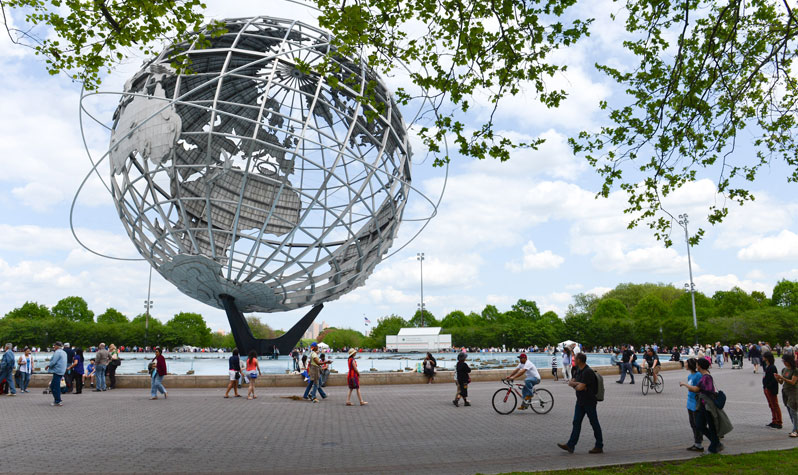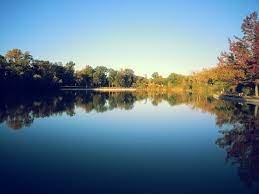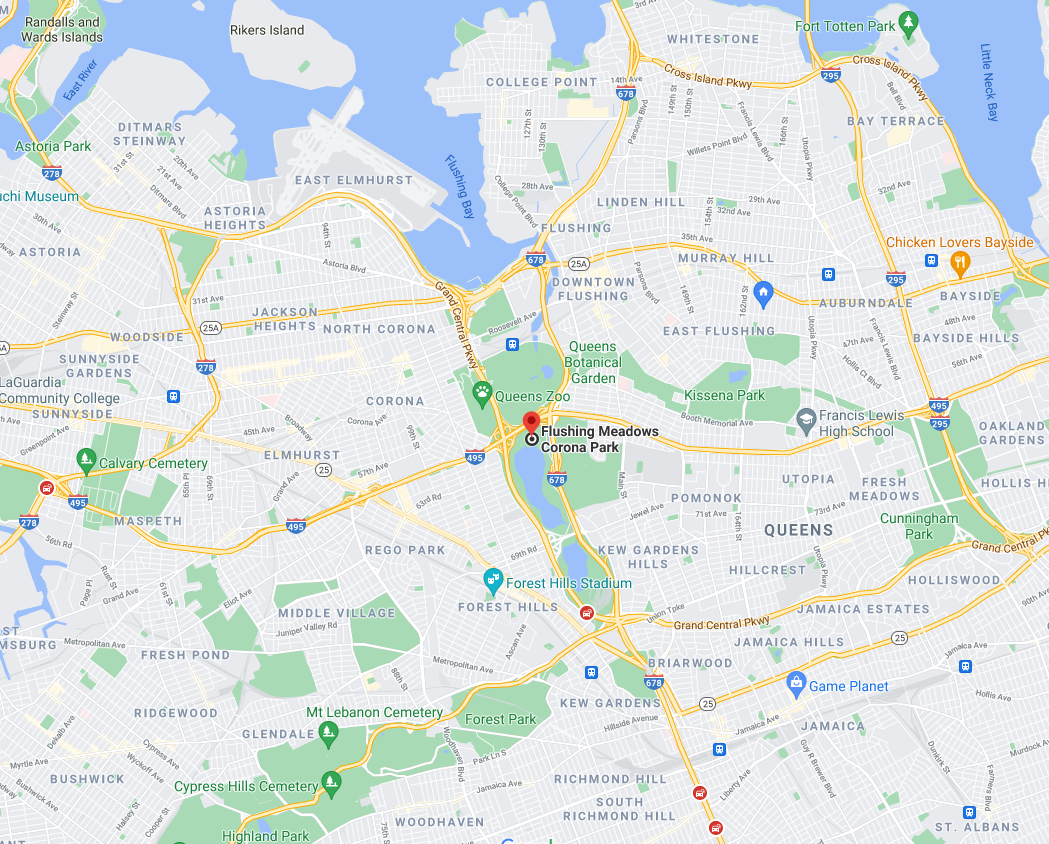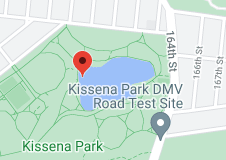One of the city's most iconic parks, and the site of two twentieth century World's Fairs, Flushing Meadows-Corona Park continues to draw and delight visitors. From historic walks, to scenic trails, to sports and activities, there's always something to do here. You can play soccer, baseball, tennis, volleyball, cricket and more; work out at our recreation center or our indoor pool; explore the park's lakes and trails by foot, bike, or kayak; or visit one of the park's many cultural and civic institutions. Spend your day in a park that has it all!
Flushing Meadows–Corona Park retains much of the layout from the 1939 World's Fair. Its attractions include the USTA Billie Jean King National Tennis Center, the current venue for the US Open tennis tournament; Citi Field, the home of the New York Mets baseball team; the New York Hall of Science; the Queens Museum of Art; the Queens Theatre in the Park; the Queens Zoo; the Unisphere; and the New York State Pavilion. It formerly contained Shea Stadium, demolished in 2009. The Flushing River continues to run through the park, and two large lakes called Meadow and Willow Lakes take up much of the park's area south of the Long Island Expressway. Flushing Meadows–Corona Park is owned and maintained by New York City Department of Parks and Recreation, also known as NYC Parks. Private, non-profit groups such as the Flushing Meadows–Corona Park Conservancy and the Alliance for Flushing Meadows–Corona Park provide additional funds, services, and support. The park is at the eastern edge of the area encompassed by Queens Community Board 4.
design of the Park
The layout of Flushing Meadows–Corona Park retains much of Gilmore D. Clarke and Michael Rapuano's Beaux-Arts planning from the 1939 and 1964 World's Fairs. The northern section of the park, the former fair grounds, revolves around large paved pathways which during the fairs led to focal points such as pavilions, fountains and sculptures. The Trylon and Perisphere, and later Unisphere, were placed at the main axial point. The Unisphere and Queens Museum currently sit at the west end of the main promenade. Near the center of the promenade (called Herbert Hoover Promenade on the north side, and Dwight D. Eisenhower Promenade on the south side) are the Fountains of the Fairs, which sit in the median of the paths. At the far east end is the Fountain of the Planets, originally called the Pool of Industry. This layout was used to guide fair goers to exhibits. The layout was based on Gian Lorenzo Bernini's plan for St. Peter's Square in Vatican City. The main promenade, measuring 2,500 feet (760 m), was provisionally called the "Cascade Mall" during its construction, and later named the "Constitution Mall" during the first fair. Many former exhibit and pavilion sites have since been replaced with soccer fields (artificial turf or dirt and grass), while others have been left as open grass fields.

Located just east of Flushing Meadows Corona Park, the 8.5-acre Kissena Lake offers tranquility within the borough of Queens. One of New York City's natural waterbodies, Kissena Lake has been through several man-made transformations, the latest of which was completed in 2003 to bring the lake back to a more "natural" condition. Almost three-quarters of the shoreline now consists of a soft-edge of terrestrial and wetland plant species whereas, at one time, this shoreline was composed entirely of concrete.
Kissena Park is bounded by Booth Memorial Avenue to the south; Kissena Boulevard to the west; Rose, Oak, Underhill, and Lithonia Avenues to the north; and Fresh Meadows Lane to the east. The south side of the park is mostly meadow land. Kissena Park contains a small lake, Kissena Lake, on the northeast corner. Formerly a wetland, it was transformed into a "bathtub lake" during a 1942 renovation. A freshwater marsh is located on the southern shore of the lake. The Historic Grove is located on a 14-acre (5.7 ha) site on the north end of the park, and contains trees from a nursery that formerly occupied the park site. It contains an old-growth forest that existed prior to the park's creation. The 400-meter (1,300 ft) Kissena Velodrome, at the center of the park, is used for track cycling and is the city's only remaining bicycle track. The velodrome hosts multiple bicycling programs, including Star Track. The rest of the park contains various playgrounds, soccer fields, tennis courts, and baseball fields. A Korean War memorial is located at a northern entrance to Kissena Park, at Parsons Boulevard and Rose Avenue. Another memorial, a boulder with an inscription dedicated to World War I soldiers from Queens, is located on the southern shore of Kissena Lake. Kissena Park is located in the center of the Kissena Corridor Park, a mostly continuous chain of parks several miles long, and is part of the Brooklyn-Queens Greenway. The corridor, in turn, runs along the path of a former Long Island Rail Road line that was originally known as Central Railroad of Long Island. A plaque commemorating the railroad is located at the northwest corner of the park. Bicycle paths connect the park westward to Main Street. The former Long Island Motor Parkway, now a bike path, connects Kissena Park with Cunningham Park and Alley Pond Park via the Kissena Corridor.
What it offers
Kissena Lake offers several warmwater fishing opportunities. Bluegill sunfish compose the largest proportion of the fish community with the next largest proportion consisting of black crappie. A large number of young-of-the-year black crappie were found during an October, 2007, DEC fishery survey of Kissena Lake. Fish surviving from this year-class should now offer excellent black crappie fishing. While 15" largemouth bass are less prevalent than at Prospect Park Lake, fishing for the humongous carp of Kissena can be an excellent experience. For how to catch these fish, check out DEC website information on carp fishing. Generally, fishing the vegetated shoreline should yield the best results but take care not to damage shoreline plantings. You may wish to try lures over bait, not only for the excitement but because Kissena is home to a large turtle population, many of who will go for whatever bait is attached to your hook!


